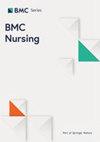Designing and psychometric evaluation of safe nursing care instrument in intensive care units
IF 3.1
2区 医学
Q1 NURSING
引用次数: 0
Abstract
Providing safe care in a sensitive and high-risk unit such as the ICU is one of the most crucial tasks for nurses. One way to establish the criteria for safe care is by creating a instrument to assess it. Therefore, this study was conducted with the aim of designing and psychometrically evaluating an instrument for safe nursing care in the ICU. The current study employed a sequential-exploratory mixed-method approach with two qualitative and quantitative phases. Based on the results of qualitative phase and the literature review, the primary instrument was designed. In the quantitative phase, the designed instrument underwent psychometric evaluation. Face, content and construct validity were assessed. Face validity was assessed by 20 nurses, and content validity was assessed by 26 experts. In the construct validity stage, the sample size for the exploratory factor analysis (EFA) included 300 nurses, and for the confirmatory factor analysis (CFA) included 200 nurses who work full-time in the ICUs of hospitals affiliated with Kermanshah University of Medical Sciences in western Iran. EFA sampling was conducted in three hospitals, encompassing six ICUs, while CFA sampling was carried out in two hospitals, covering four ICUs. Sampling was done using the convenience method. The reliability of the instrument was also assessed. Finally, the interpretability, feasibility, weighting, and scoring of the instrument were evaluated. The qualitative phase identified three themes, including professional behavior (with categories: Implementation of policies, organizing communication, professional ethics), holistic care (with categories: systematic care, comprehensive care of all systems), and safety-oriented organization (with categories: human resource management and safe environment). The primary instrument was designed with 107 items rated on a five-point Likert scale. In the quantitative phase, the psychometrics of the instrument were conducted. First, the face and content validity were assessed, and the average scale content validity index (S-CVI) was 0.94. Then, a preliminary test was conducted to assess the initial reliability (α = 0.92) and the correlation of each item with the total score. After completing these steps, the number of items in the instrument was reduced to 52. The results of the EFA explained 58% of the total variance, with 4 factors identified: professional behavior by following guidelines, comprehensive care, accurate documentation, and pressure ulcer care. At the CFA stage, the results of the calculation of indices and goodness of fit showed that the model had a good fit. The reliability of the relative stability by examining the intraclass correlation coefficient (ICC) for the whole instrument in 20 samples was 0.92 with a confidence interval of 0.97 − 0.81. To measure absolute stability and determine the responsiveness of the instrument, the standard error of measurement (SEM) was 4.39 and the minimum detectable change (MDC) was 12.13. The instrument for safe nursing care in the ICU has favorable psychometric properties.重症监护室安全护理工具的设计与心理测量评估
在重症监护室这样一个敏感和高风险的科室提供安全护理是护士最重要的任务之一。建立安全护理标准的方法之一是创建一个评估工具。因此,本研究旨在设计一种 ICU 安全护理评估工具,并对其进行心理评估。本研究采用了一种顺序-探索混合方法,分为定性和定量两个阶段。根据定性阶段的结果和文献综述,设计了主要工具。在定量阶段,对所设计的工具进行了心理测量学评估。对表面效度、内容效度和结构效度进行了评估。面效度由 20 名护士评估,内容效度由 26 名专家评估。在构造效度阶段,探索性因子分析(EFA)的样本量包括 300 名护士,确认性因子分析(CFA)的样本量包括 200 名在伊朗西部克尔曼沙阿医科大学附属医院重症监护室全职工作的护士。EFA 抽样在三家医院进行,包括六个重症监护室,而 CFA 抽样在两家医院进行,包括四个重症监护室。抽样采用方便法。此外,还对工具的可靠性进行了评估。最后,还对工具的可解释性、可行性、权重和评分进行了评估。定性阶段确定了三个主题,包括专业行为(分类为:政策执行、组织沟通、专业行为)、专业行为(分类为:政策执行、组织沟通、专业行为)、专业行为(分类为:专业行为):执行政策、组织沟通、职业道德)、整体护理(分类:系统护理、所有系统的综合护理)和以安全为导向的组织(分类:人力资源管理和安全环境)。主要工具设计了 107 个项目,采用李克特五点量表评分。在定量阶段,对工具进行了心理测量。首先,对表面效度和内容效度进行了评估,量表内容效度平均指数(S-CVI)为 0.94。然后,进行了初步测试,以评估初始信度(α = 0.92)以及各项目与总分的相关性。完成这些步骤后,工具中的项目数量减少到 52 个。EFA 的结果解释了 58% 的总方差,确定了 4 个因子:遵循指南的专业行为、全面护理、准确记录和压疮护理。在 CFA 阶段,指数和拟合优度的计算结果显示模型具有良好的拟合度。通过检查 20 个样本中整个工具的类内相关系数(ICC),相对稳定性的可靠性为 0.92,置信区间为 0.97 - 0.81。为了测量绝对稳定性并确定该工具的响应性,测量的标准误差(SEM)为 4.39,最小可检测变化(MDC)为 12.13。重症监护室安全护理工具具有良好的心理测量特性。
本文章由计算机程序翻译,如有差异,请以英文原文为准。
求助全文
约1分钟内获得全文
求助全文
来源期刊

BMC Nursing
Nursing-General Nursing
CiteScore
3.90
自引率
6.20%
发文量
317
审稿时长
30 weeks
期刊介绍:
BMC Nursing is an open access, peer-reviewed journal that considers articles on all aspects of nursing research, training, education and practice.
 求助内容:
求助内容: 应助结果提醒方式:
应助结果提醒方式:


